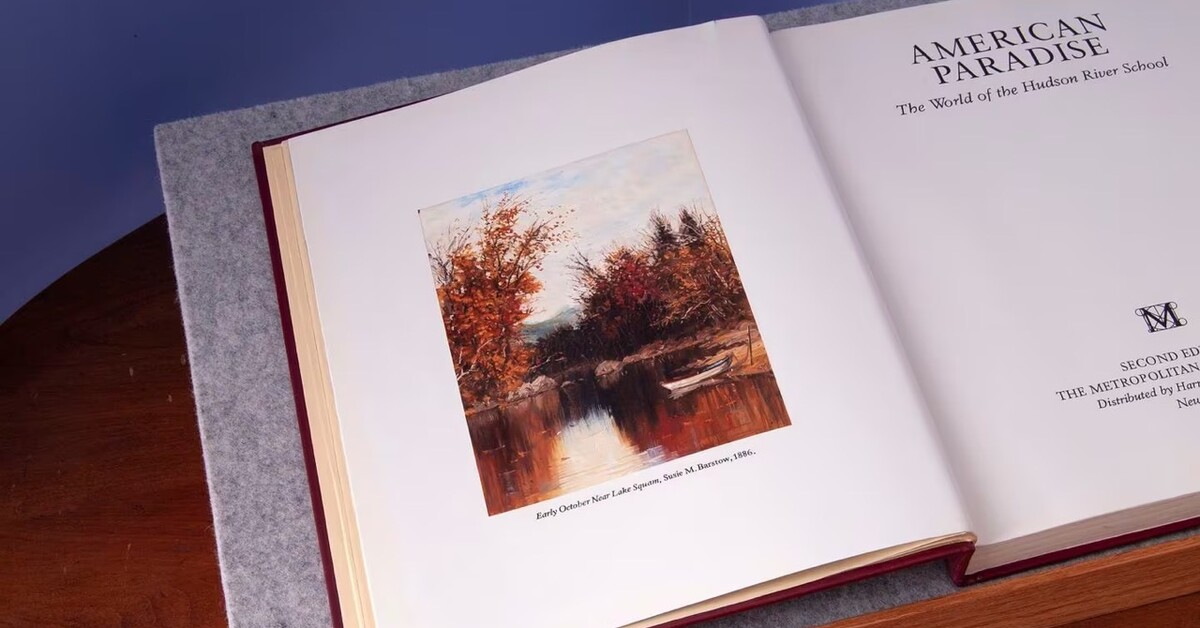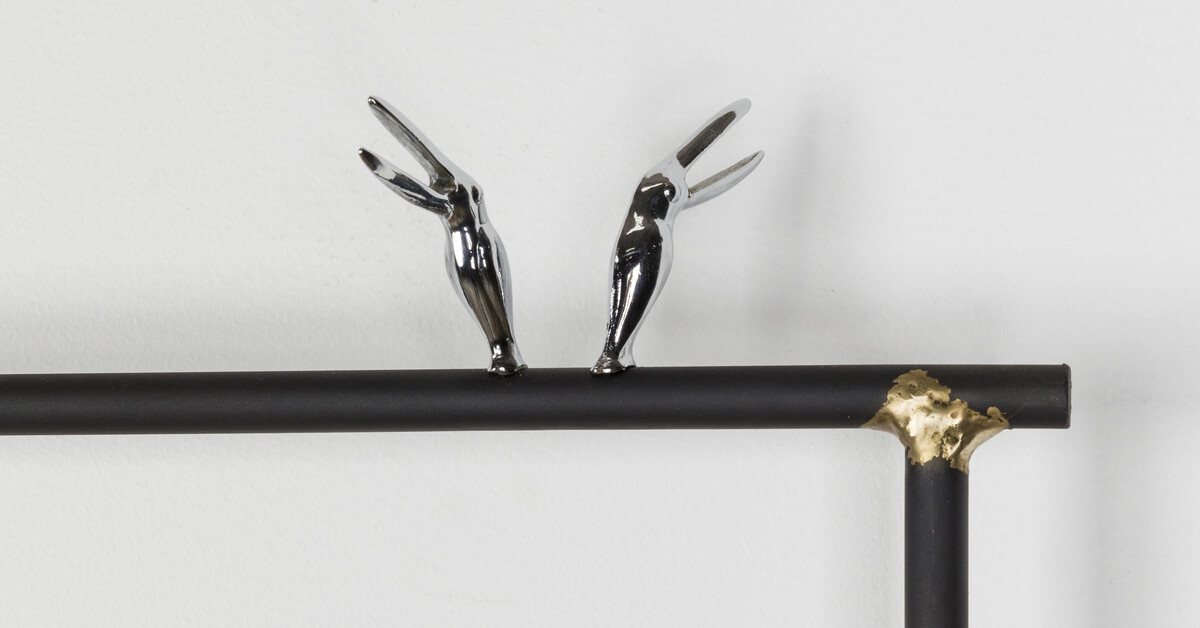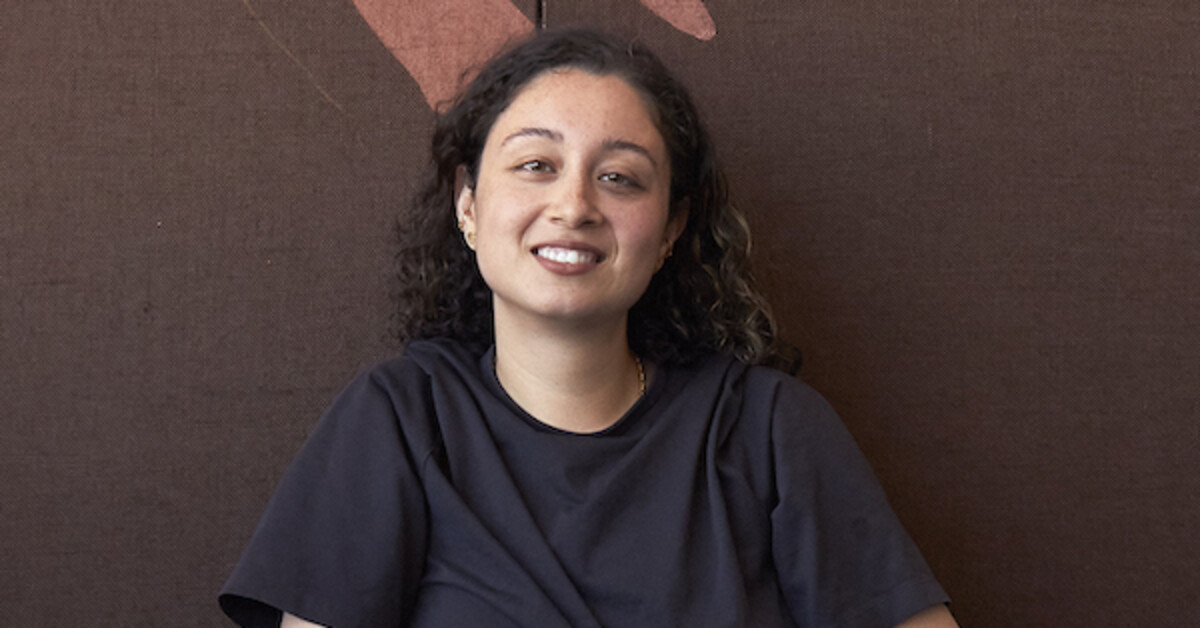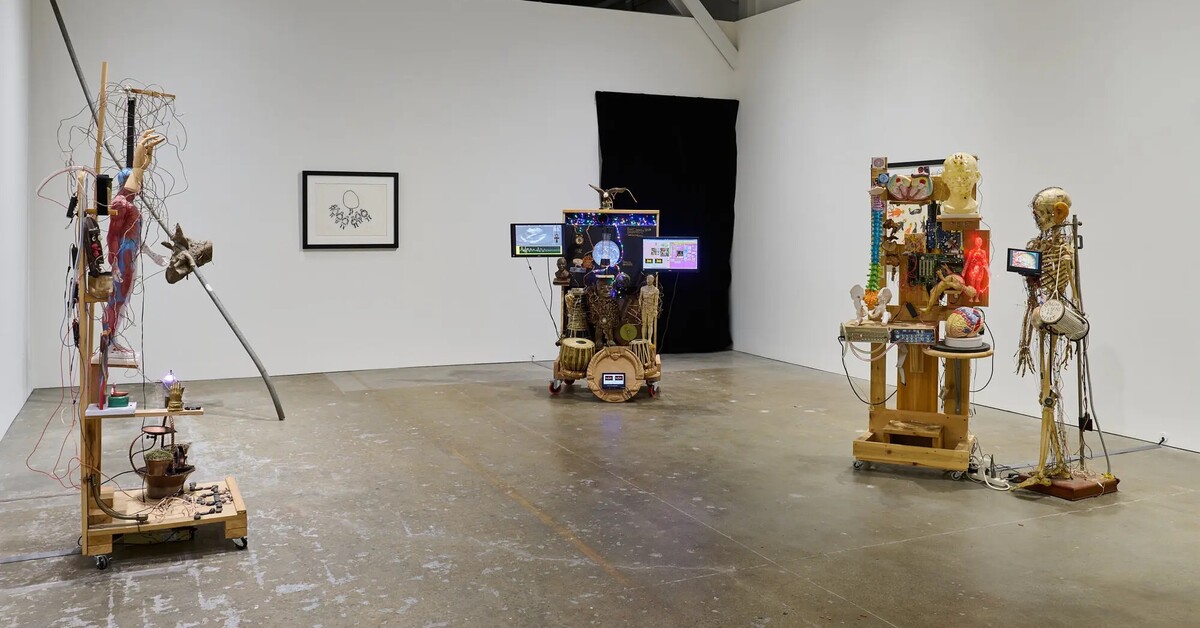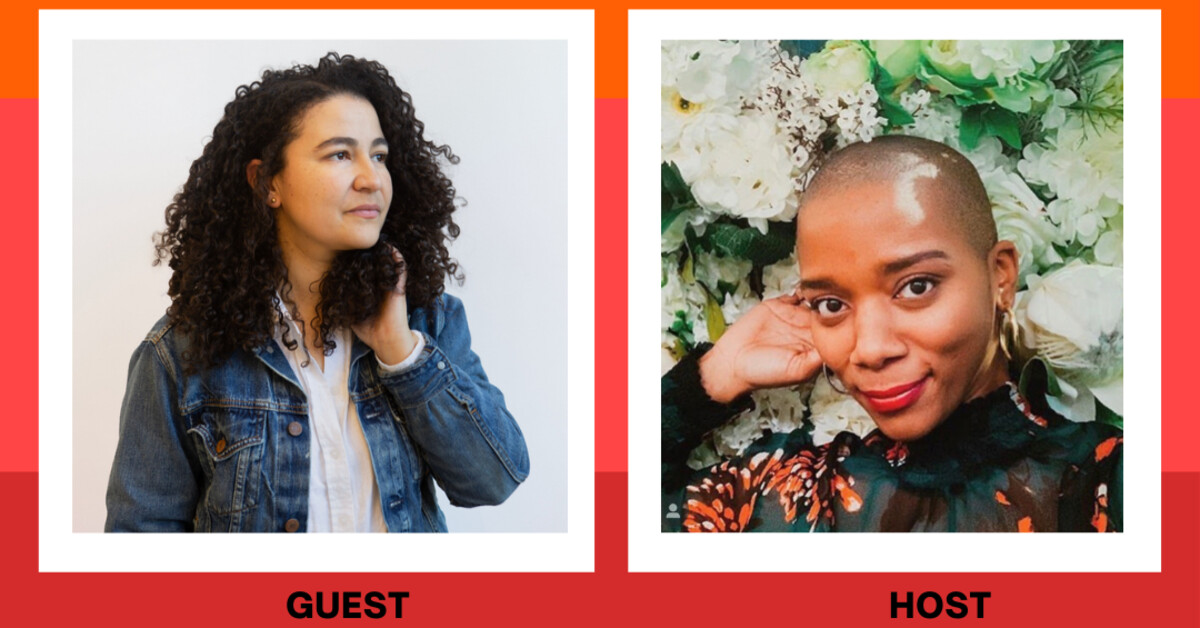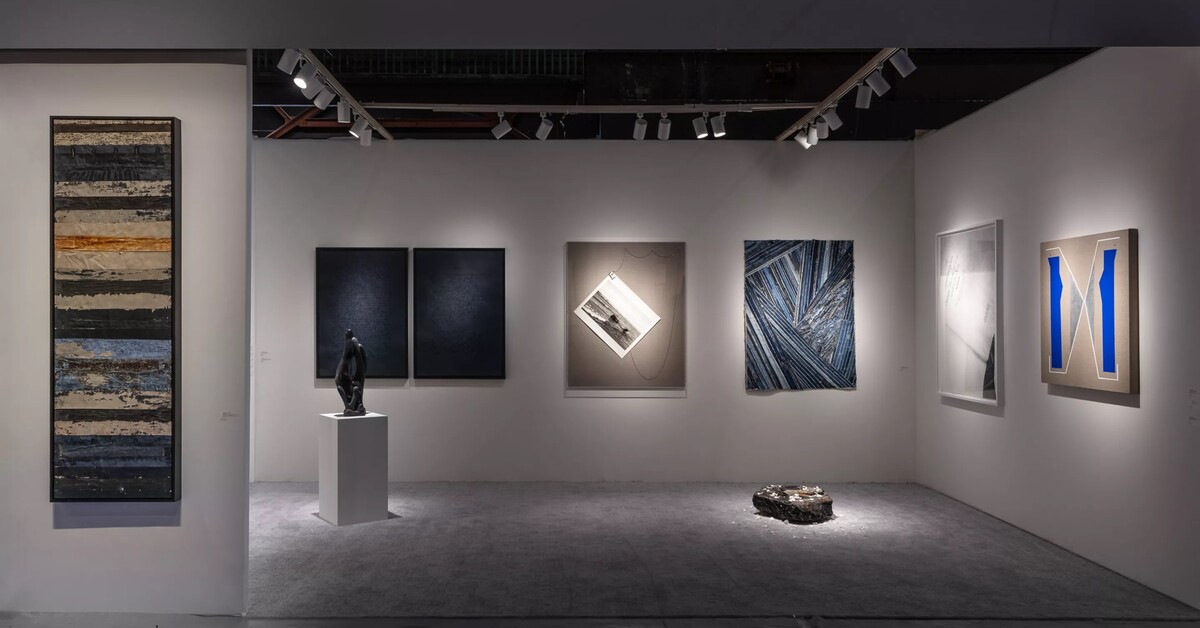14 art exhibits to explore this winter
WBUR / Jan 11, 2024 / by Solon Kelleher / Go to Original
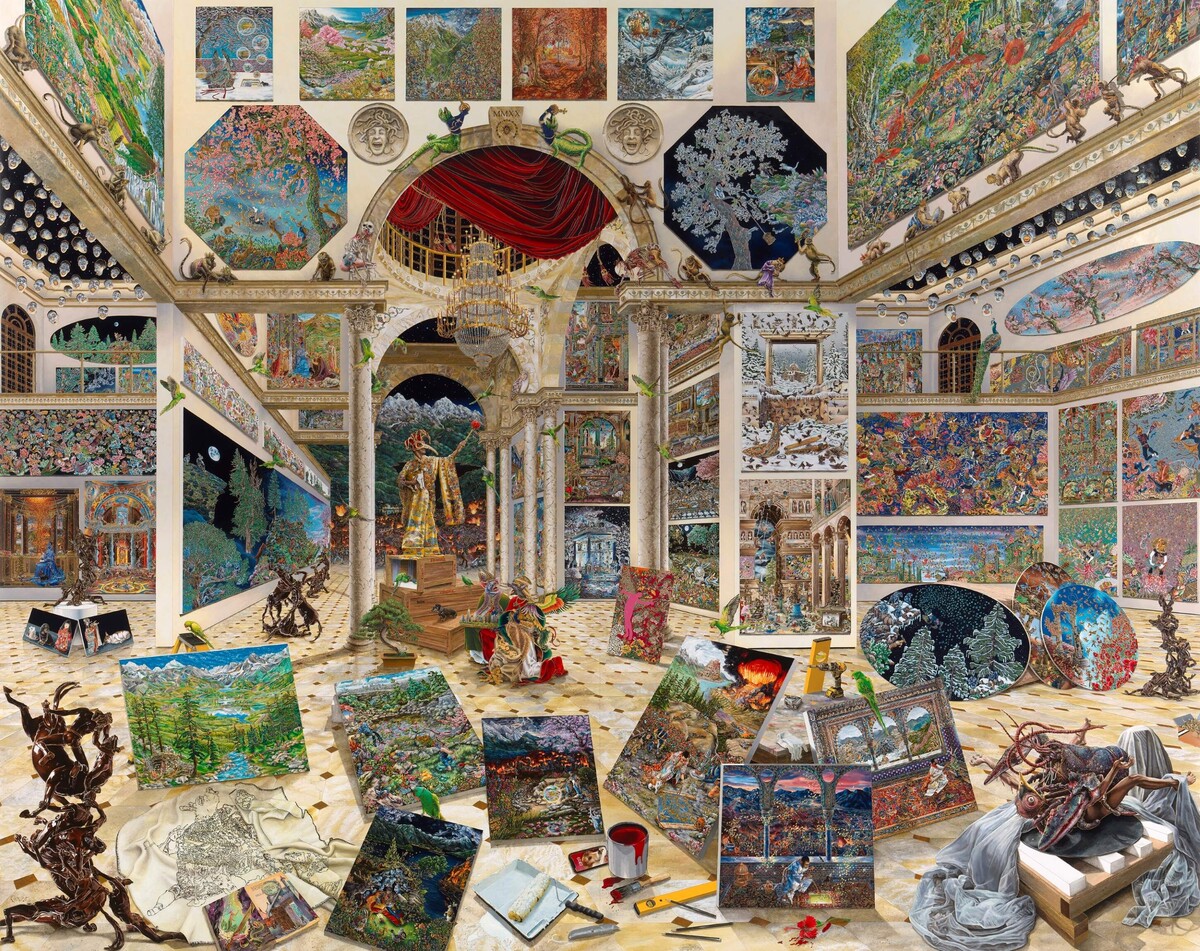
Raqib Shaw, “The Retrospective 2002–2022” (2015–2022). © Raqib Shaw. (Courtesy the artist and Isabella Stewart Gardner Museum. Photo by Shaw Studio)
Each season ushers new art into exhibition halls throughout Massachusetts, and this winter brings a refreshing variety of artists and influences from across the globe as well as artists with ties to Boston and New England. Wellesley College’s Davis Museum has a retrospective on alum Lorraine O’Grady. The Isabella Stewart Gardner Museum has fantastical paintings from London-based artist Raqib Shaw sitting alongside works in its permanent collection. The ICA has a multimedia installation recently seen at the Venice Art Biennale by Worcester-born artist Wu Tsang.
Whether you’re looking to learn more about where the land meets the water in New England or a new iconography of an international queer history, this season’s exhibits have offerings to deepen your roots in both your local and global community.
‘Comrade Sisters: Women of the Black Panther Party’
Museum of Fine Arts, Boston
Through June 24
Look through history books, and you’ll find countless examples of the distinctive Black Panther uniform: a black beret, sunglasses, a leather jacket with pinback buttons and sometimes a strapped firearm. This exhibit shifts focus away from that well-known imagery and instead focuses on the women of the political party. The collection of 27 photographs from Cambridge-born journalist Stephen Shames draws from the party’s community enrichment programs across the United States, which included educational, medical, nutritional support systems and more. One photo takes us to a scene where a woman holds a bag marked with the name of one of the party’s survival programs: “People’s Free Food Program.” In another photo, the widow of one of the party’s leaders gathers school children in a classroom at the party’s Intercommunal Youth Institute in Oakland, California. Together, the collection creates a wider picture of the Black Panther Party that goes beyond the widespread images of men in uniform.
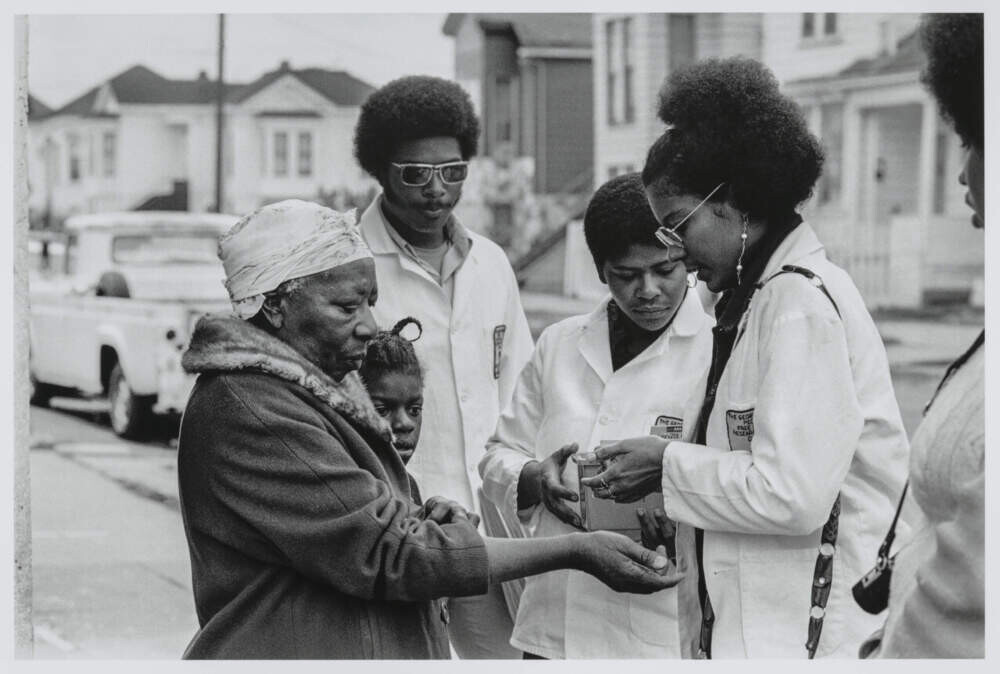
Stephen Shames, “Oakland, California: Adrienne Humphrey tests a woman for sickle cell anemia during Bobby Seale’s campaign for Mayor of Oakland,” 1973. (Courtesy Museum of Fine Arts, Boston)
‘Framing the Domestic Sea: Photographs by Jeffery C. Becton’
New Bedford Whaling Museum
Jan. 12-May 5
Jeffery C. Becton’s photo collages incorporate the stunning New England coastline – in particular, his home in Deer Isle, Maine – and architecture from New England homes. The old-timey coastal homes and the seemingly infinite Atlantic Ocean typically coexist in close proximity but rarely collide. The photographic collages in Becton’s “Framing the Domestic Sea” bring the two worlds together in a style that can be described as science-fiction photography. Becton uses layered photographs to achieve his vision of a dream state, or perhaps nightmare as global sea levels rise. Through April 24, visitors will also be able to check out one of “The Stars That Guide Us,” an exhibit that presents the relationship between the stars, the night and the coast.
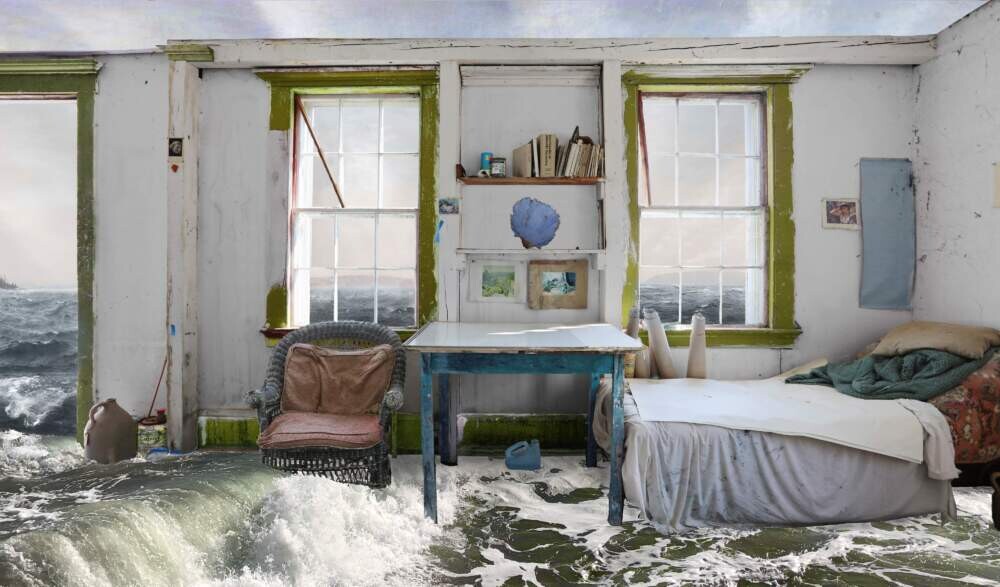
Jeffery C. Becton, “Waking Up,” 2021. (Courtesy of the artist/New Bedford Whaling Museum)
‘Ria Brodell: Butch Heroes’
Fitchburg Art Museum
Jan. 13-June 2
Artist and researcher Ria Brodell has been sifting through archives for records and descriptions of people who were assigned female at birth but didn’t present as female in the heterosexual norms of the time. In this exhibit, Brodell presents these figures in the medium of baseball cards: characterized portraits that communicate a sense of style, place and purpose. In one portrait, a smartly dressed Johnny Williams leans against an ornate beam under the shade in South Africa. In another, Esther Eng (also known as Brother Ha) grins behind an old fashioned camera set up on a city sidewalk. Together, these images queer the format of baseball cards as well as the Catholic iconography of Brodell’s upbringing to celebrate individuals who challenged gender norms decades ago. FAM has two other exhibits on the theme of gender roles in society, both opening Feb. 3: “On Her Terms: Feminine Power Embodied,” which gathers works from New England artists who use their craft to engage in dialogue with issues of today and “Pictured by Eakins: Ella Crowell as Model and Student” about the niece of famed American artist Thomas Eakins.
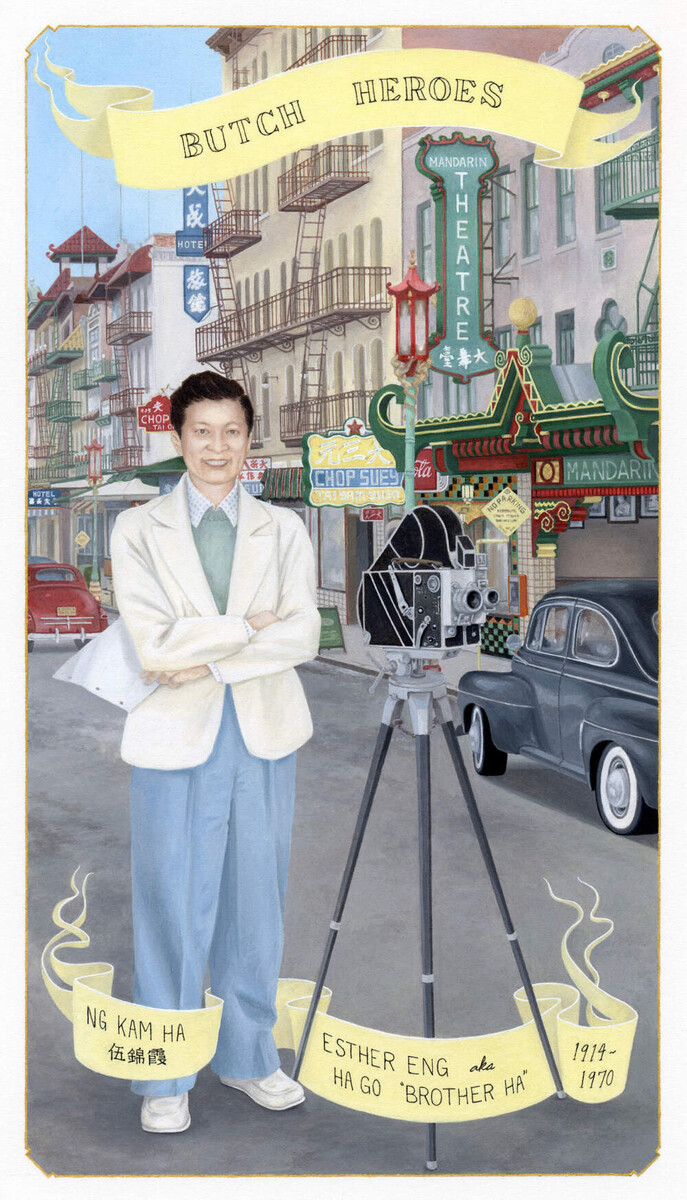
Ria Brodell, “Esther Eng aka Brother Ha 1914-1970 United States,” 2022. (Courtesy of the artist/Fitchburg Art Museum)
‘Maria Molteni: Soft Score’
Fuller Craft Museum
Jan. 13-Jan. 5, 2025
Have you ever watched a game of basketball and had the feeling that you were at a skillfully choreographed and partly improvised dance performance? That blurred line between art and sport is where Boston-based artist Maria Molteni has found a sweet spot in celebrating the human body and mind. Molteni created several site-specific works for this exhibit including a painted basketball court, a performance piece inspired by the knitting on basketball netting and a cloud structure made of basketball equipment inspired by the game’s drive to “get air.” While basketball is the main focus of the exhibit, Molteni draws from a varied background, coming from a family with a history in Tennessee square dancing and stunt-motorcycling. They’re also the founder of New Craft Artists in Action, a queer/ feminist collective that strives for “participation over spectatorship” and the “liberation of recreation.”
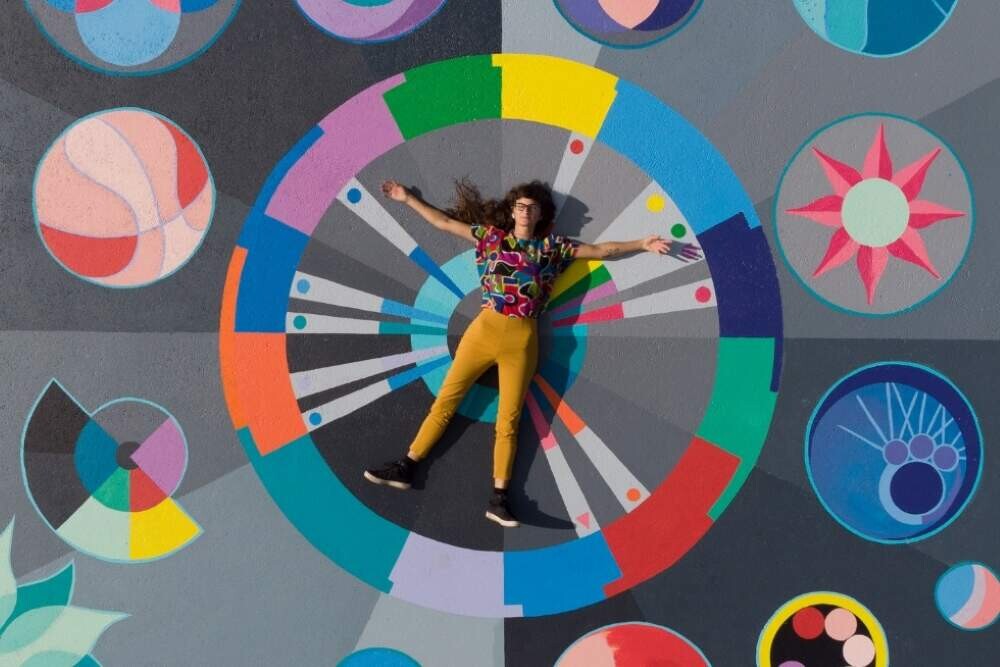
Maria Molteni’s “Cosmic Court!” in Fall River. (Courtesy of the artist)
‘Steve McQueen: Lynching Tree’
Isabella Stewart Gardner Museum
Jan. 20-Feb. 4
Before he was an Academy Award-winning director, Steve McQueen was an experimental artist whose works appeared in gallery installations rather than on screen. Between big studio films, he’s continued his practice and his art has been featured in museums including The Art Institute of Chicago and the Whitney Museum of American Art. His work “Lynching Tree” will be on display for just 16 days at the Isabella Stewart Gardner Museum. McQueen photographed the oak tree on a plantation near New Orleans while filming “12 Years a Slave.” Presented in a lightbox, the photo itself gives no context of the tree’s past horrors, the only clue given to viewers is the title. It’s an image of nature that contains both beauty and horror.
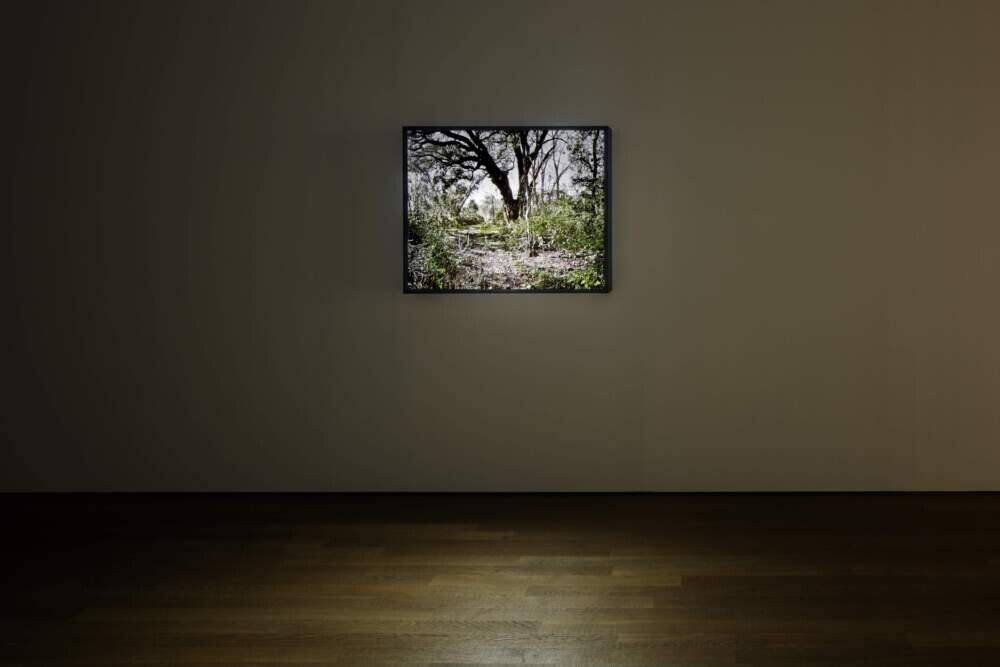
Installation view of Steve McQueen’s “Lynching Tree” at Schaulager Münchenstein/Basel, 2013. (Courtesy of the artist, Marian Goodman Gallery and Thomas Dane Gallery)
‘Wolf Vostell: Dé-coll/age Is Your Life’
Harvard Art Museums
Jan. 20-May 5
The verb “collage” means to put together. “Décollage” means to unglue. It’s a word that describes a familiar scene from Wolf Vostell’s experiences in war-torn Germany where posters promoting World War II were often ripped from their public displays. This exhibit’s title features a slash halfway through the word as a form of wordplay — the word is ripped apart from itself. The title is also an excisement of sorts where the artist is trying to rid his society of hatred and antisemitism. Vostell’s work has both artistic and historic significance as one of the earliest German artists to face the Holocaust. He hoped his art would both remind audiences of the genocide and prevent similar tragedies in the future. The exhibition brings together prints, films, sculptures and more from over 30 years of the artists’ work. Harvard University’s Bush-Reisinger Museum hosts the largest collection of Vostell’s work in the Americas.
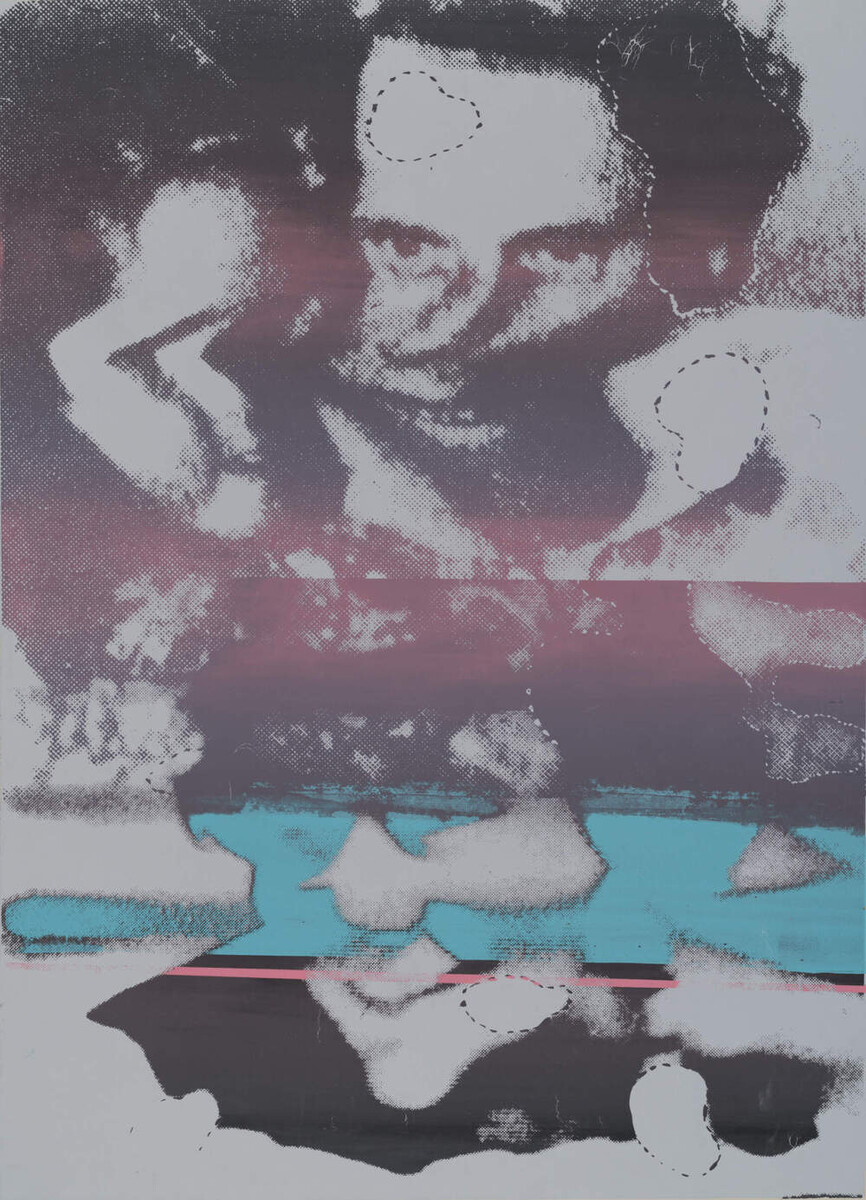
Wolf Vostell, “TV Blur,” 1966. (Courtesy Wolf Vostell; Artists Rights Society (ARS), New York; VG Bild-Kunst, Bonn; and Harvard Art Museums)
‘Wordplay’
Institute of Contemporary Art/Boston
Jan. 30-Dec. 1
Here’s one for the writers, editors and otherwise word-obsessed: an exhibit centered around the creative use of words in art. It might sound obvious, but the written word is often a tremendous subject in art as it’s naturally visual and symbolic. “Wordplay” includes posters, banners, photographs and more — many works pulled from the ICA’s permanent collection — demonstrating different uses of words in art. There’s a print by Ingrid Mwangi Hutter depicting a map drawn across a person’s belly. An acrylic painting by Boston-based artist Joe Wardwell that almost appears as an internet “captcha” test, reading in all caps, “IF YOU GOT THE MONEY HONEY.” Step away from the painting, and you may see an image of Downtown Boston from the view of Wardwell’s Dorchester studio. Look closer at the painting and phrases like “price of repression” and “from the humble to the mighty those in need” pop out. The collection will also display works by legends of the concept art: Jenny Holzer, who has used massive canvases such as billboards as mediums for her art; and Glenn Ligon, who has presented words using neon, prints and mixed media to put forward questions on language, desire, race and identity.
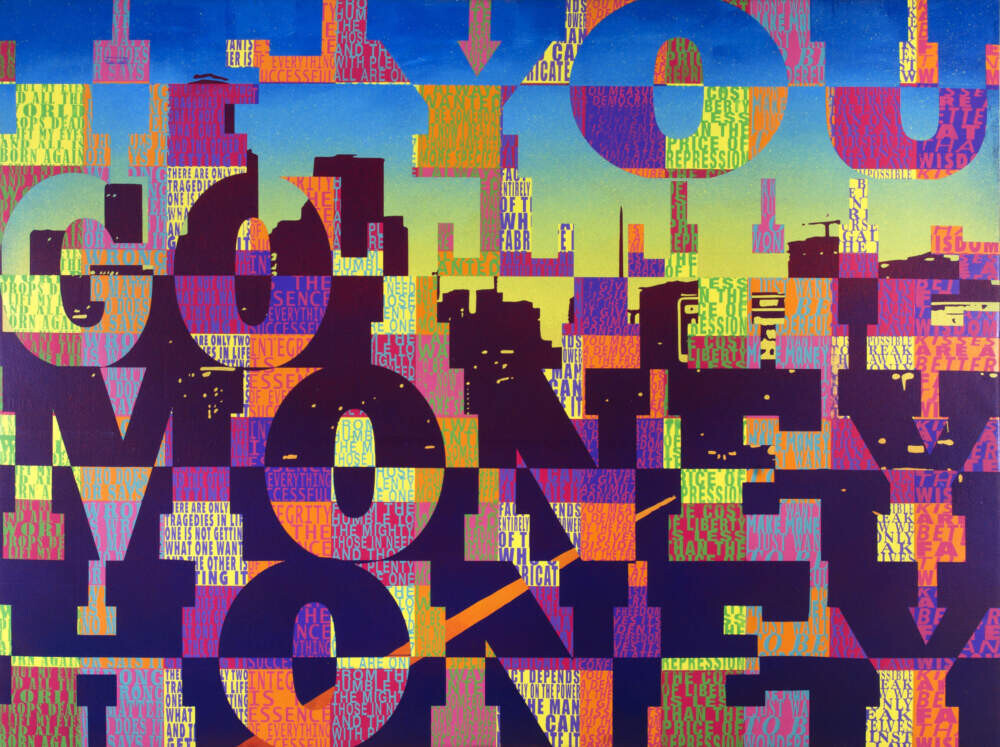
Joe Wardwell, “If You Got the Money Honey,” 2021. (Courtesy Institute of Contemporary Art/Boston)
‘Eluding Capture: Three Artists from Central Asia’
MASS MoCA
Opening Feb. 3
This exhibit brings together works from three artists — Alexander Ugay, Gulnur Mukazhanova and Saodat Ismailova — who each use their various mediums to examine what it means to belong in Central Asia. It’s a part of the world that has been invaded and fought over for centuries, and as a result, it’s a place with a unique sense of identity and a rich diversity of artistic and cultural influences. The artists in this exhibit use these blended traditions to face the questions of identity and belonging. Saodat Ismailova, who works in installations and films in Paris and Tashkent, tells personal narratives about living through political and cultural upheaval. Kazakh-Korean photographer Alexander Ugaywho uses an understanding of history to raise questions about working people and their relationship to land. He presents these dynamics in the forms of photographs. Gulnur Mukazhanova’s primary medium is felted textiles, which has ancient traditions with felt and wool in her home country of Kazakhstan.
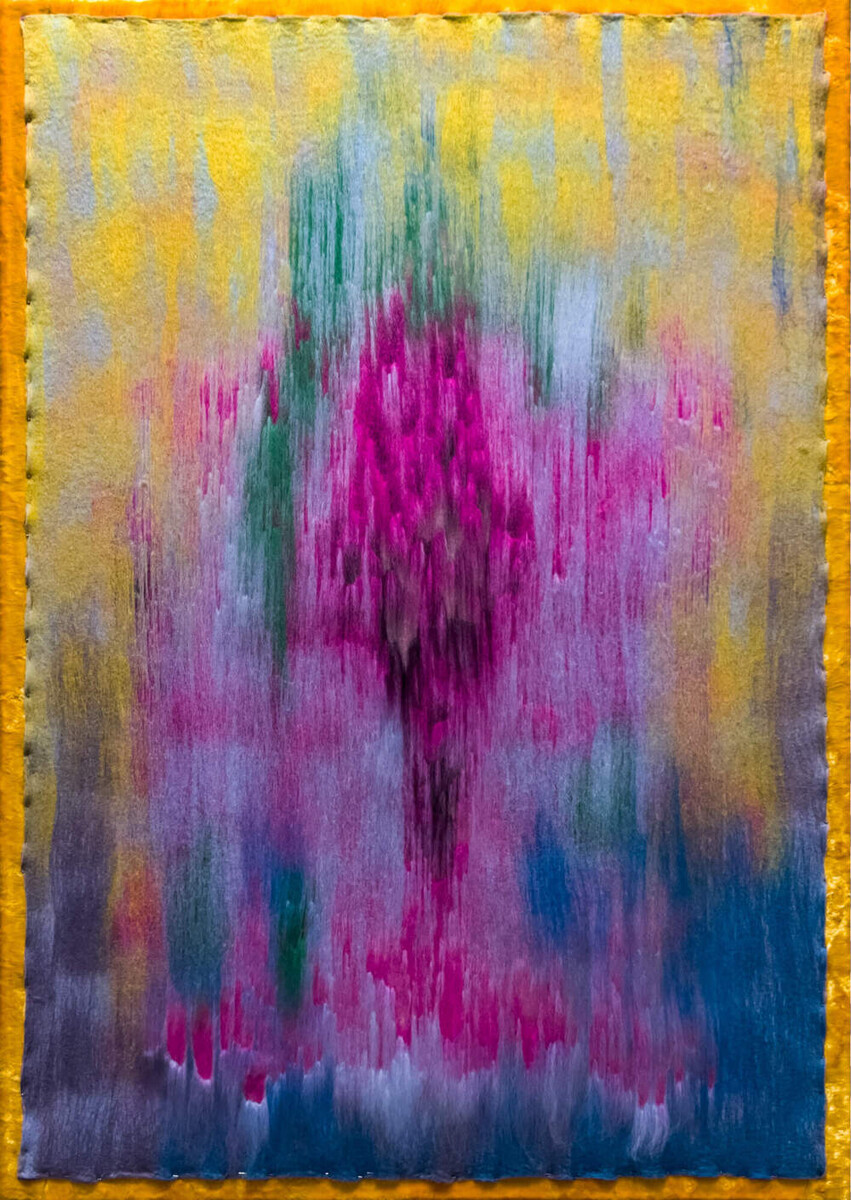
Gulnur Mukazhanova, Untitled, 2023. (Courtesy MASS MoCA)
‘Lorraine O’Grady: Both/And’
Davis Museum at Wellesley College
Feb. 8-June 2
Art was a second act for Lorraine O’Grady, whose artistic creations were undoubtedly inspired by her unique path in life. Born in Boston to Jamaican parents in 1934, O’Grady was primed for a rich understanding of the concept of multiculturalism. She attended Wellesley College and became the first graduate to pass a U.S. Federal Management intern exam. She worked for years at the Bureau of Labor Statistics, and at age 45, she began her life as an artist. Through her use of collage, photo-installation, performance art and video, O’Grady has engaged in and inspired conversations about Black female subjectivity, multiplicity and selfhood as well as intersectional feminist theory and practice. This collection at the Davis Museum is both a homecoming for O’Grady and the first retrospective of her work. First presented by the Brooklyn Museum in 2021, “Both/And” is O’Grady’s attempt to subvert the “either/or” outlook that is so prevalent in Western thinking.
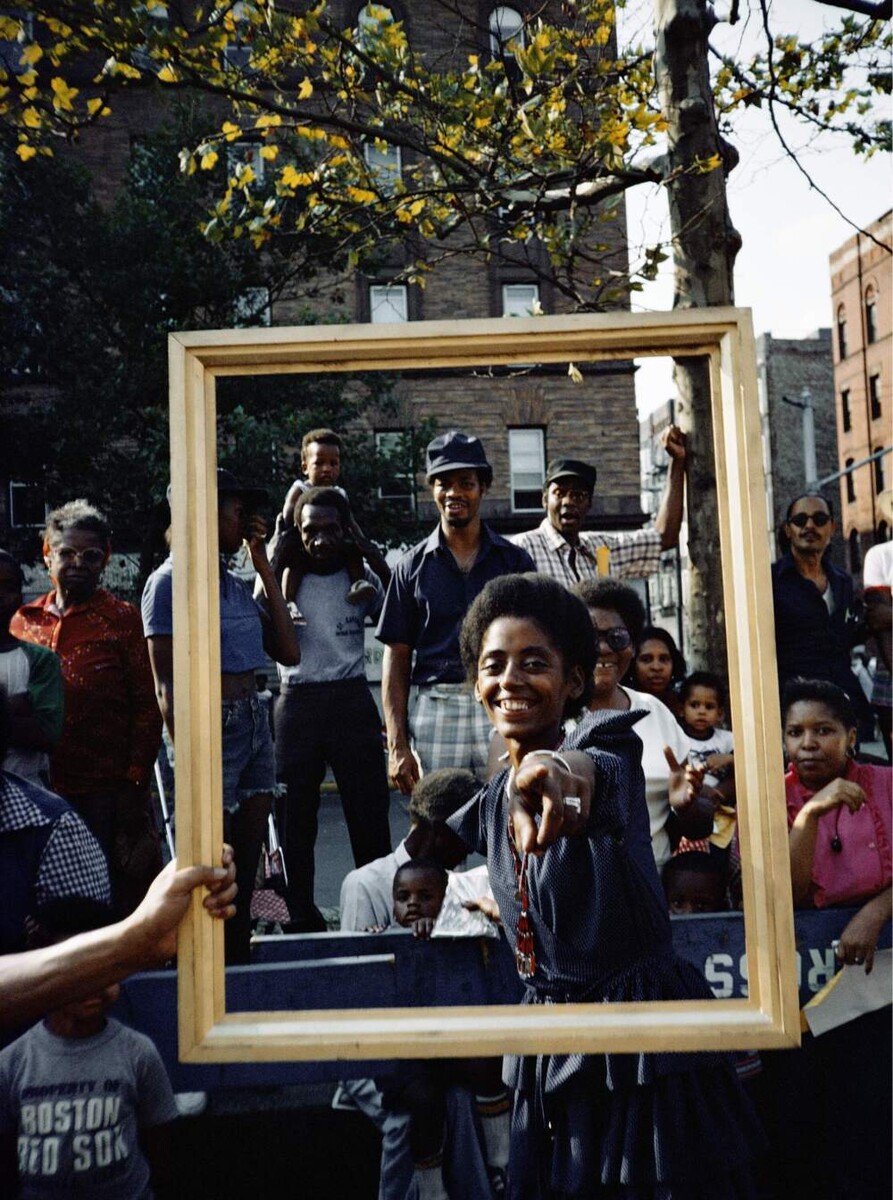
Lorraine O’Grady, “Art Is … (Girl Pointing),” 1983/2009. (Courtesy Lorraine O’Grady/Artists Rights Society (ARS), New York and Davis Museum)
‘Raqib Shaw: Ballads of East and West’
Isabella Stewart Gardner Museum
Feb. 15-May 12
There’s a puzzled, psychedelic quality to Raqib Shaw’s paintings. They depict fantastical scenes with increased saturation and dramatic shadowing that almost produce a collage-like effect. Shaw’s style draws from his international experiences and influences. Shaw was born in Kolkata, a part of India with gardens, lakes, mountains and, unfortunately, religious tensions. As a teen, his family relocated to New Delhi, India’s bustling capital city, to escape violence and shortly after moved to London. His paintings come across as a vibrant dream, comprised of seemingly unrelated elements yet united in a single, spectacular image. The exhibit will feature 20 of his works and spread throughout the entire Isabella Stewart Gardner Museum, primarily in the Hostetter Gallery, alongside other works in the museum’s collection.
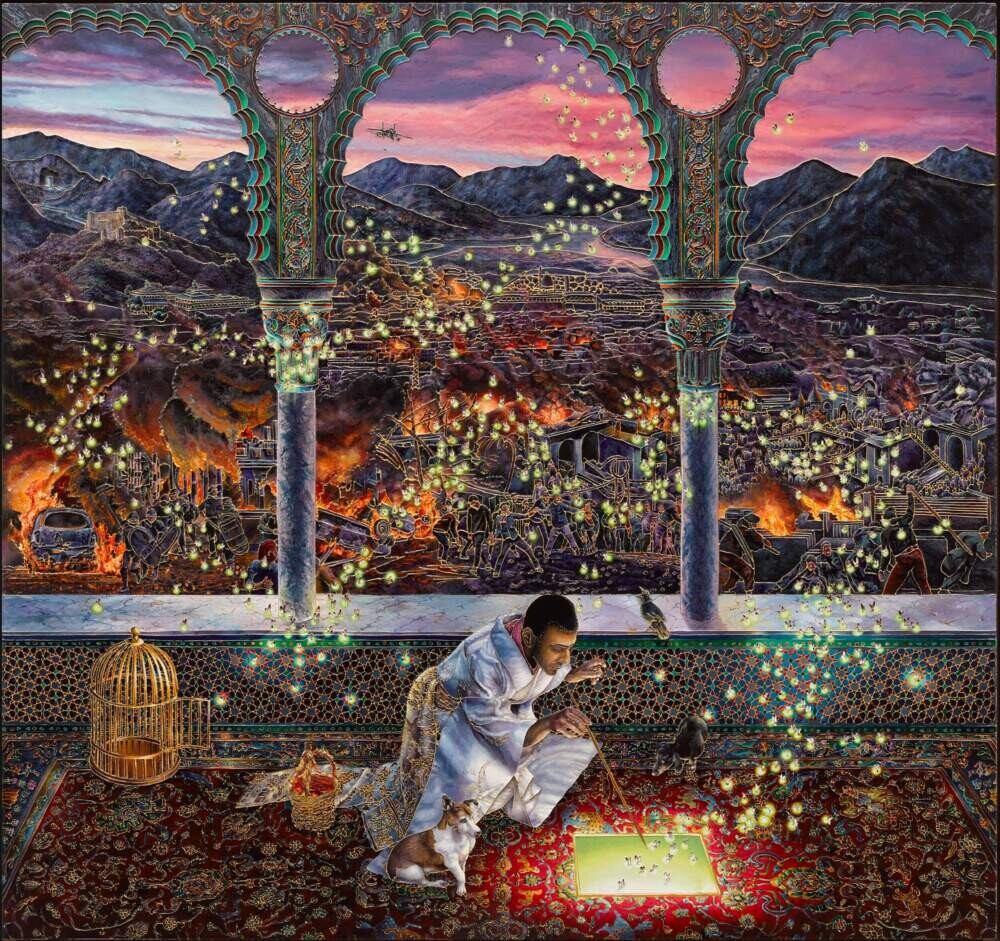
Raqib Shaw, “Ode to the Country without a Post Office, 2019-2020.” (Courtesy Isabella Stewart Gardner Museum)
‘Wu Tsang: Of Whales’
Institute of Contemporary Art/Boston
Feb. 15-Aug. 4
Imagine a soundscape of saxophones, clarinets and contrabass. The music is layered and played by an international group of musicians, each celebrated in their own right. Pair that with the visuals of underwater ocean scenes, and you have Wu Tsang’s “Of Whales.” Tsang used the Unity gaming platform to continuously generate a simulation of a sperm whale’s journey from the surface to the ocean depths and back again. The installation follows a daytime/nighttime cycle and each 24-hour period is entirely unique. The meditative installation will be on display at the ICA immediately adjacent to Boston Harbor for the complete package of tranquility and reflection. “Of Whales” is part of a trilogy by Tsang — two video installations and a film — inspired by the story of “Moby Dick,” which Tsang cited in an interview as a complicated yet fascinating part of Americana.
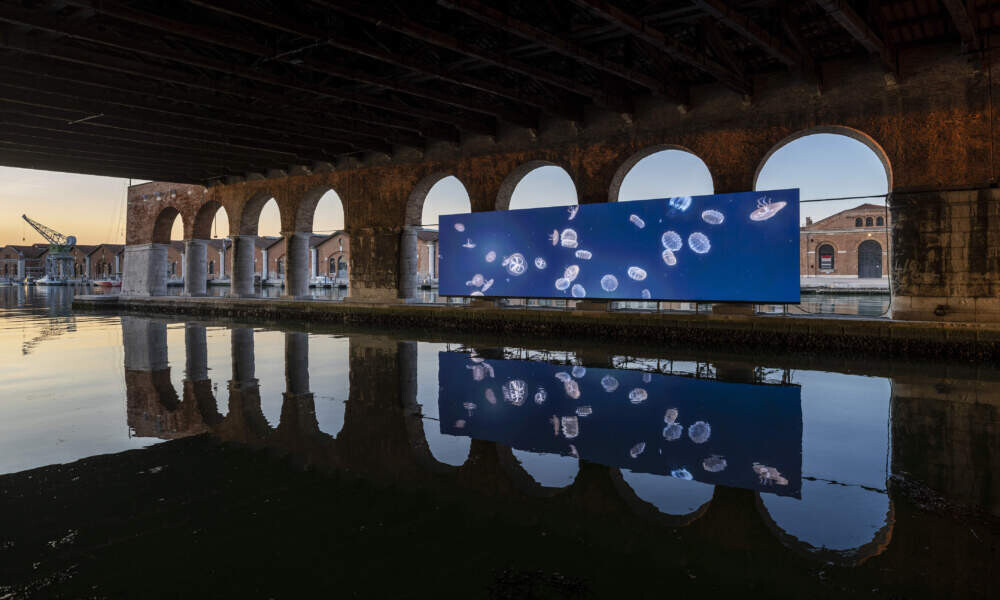
Installation view of Wu Tsang’s “Of Whales” (2022) at the 59th Venice Biennale. (Courtesy the artist; Galerie Isabella Bortolozzi, Berlin; Antenna Space, Shanghai; and Cabinet, London. Photo by Matteo De Fina)
‘Our Time on Earth’
Peabody Essex Museum
Feb. 17-June 9
How would you set your dinner table if your guests were a fox, a wasp and a host of other unusual creatures? “Our Time on Earth” seeks to challenge the way we see our relationship with nature, and it does that by immersing visitors in a large-scale, multimedia ode to our planet. It convenes the works of 12 artists with backgrounds in technology, science and design from around the world including immersive projections by Victoria Vesna, creative studio Holition and “Heat” author George Monbiot. This traveling exhibit was organized by the Barbican Centre in London, and the run at the Peabody Essex Museum marks its American debut.
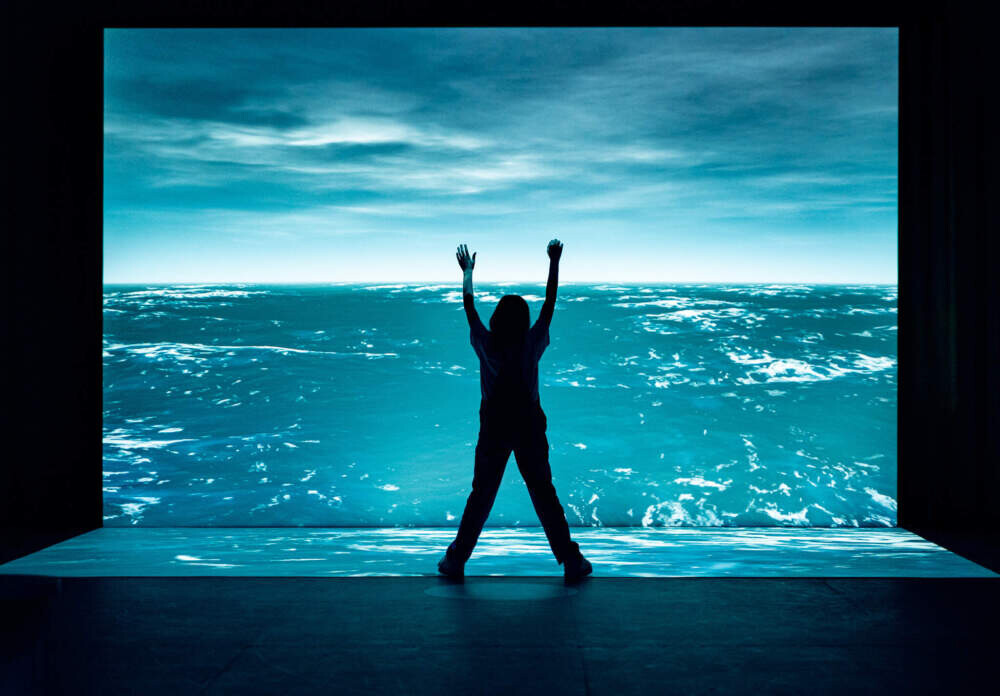
Victoria Vesna, “Noise Aquarium” (detail), 2022. Installation view of the “Our Time on Earth” exhibition at the Barbican Centre. (Courtesy Danann Breathnach Photography/Peabody Essex Museum)
‘List Projects 29: Brittni Ann Harvey and Harry Gould Harvey IV’
MIT List Visual Arts Center
March 7-June 23
“List Projects 29” marks the final show in a special series at the MIT List Visual Arts Center that has focused on collaborations between artists. This show features the works of two artists with ties to the southern New England coast. Brittni Ann Harvey, who mostly works in sculptures and installations, recently used embroidery to make a “Robot Dog” series that both harkened back to a once-bustling textile industry in Fall River and looked at today’s robotics companies. The other artist in the exhibition, Harry Gould Harvey IV, examines the economic and class structure of the Newport Mansions and the surrounding area. He uses reclaimed materials from Gilded wealth as a canvas for his explorations into the dynamics of that community. The artists co-founded the Fall River Museum of Contemporary Art and share a vision for artist-led spaces and art that engages with the wider community.
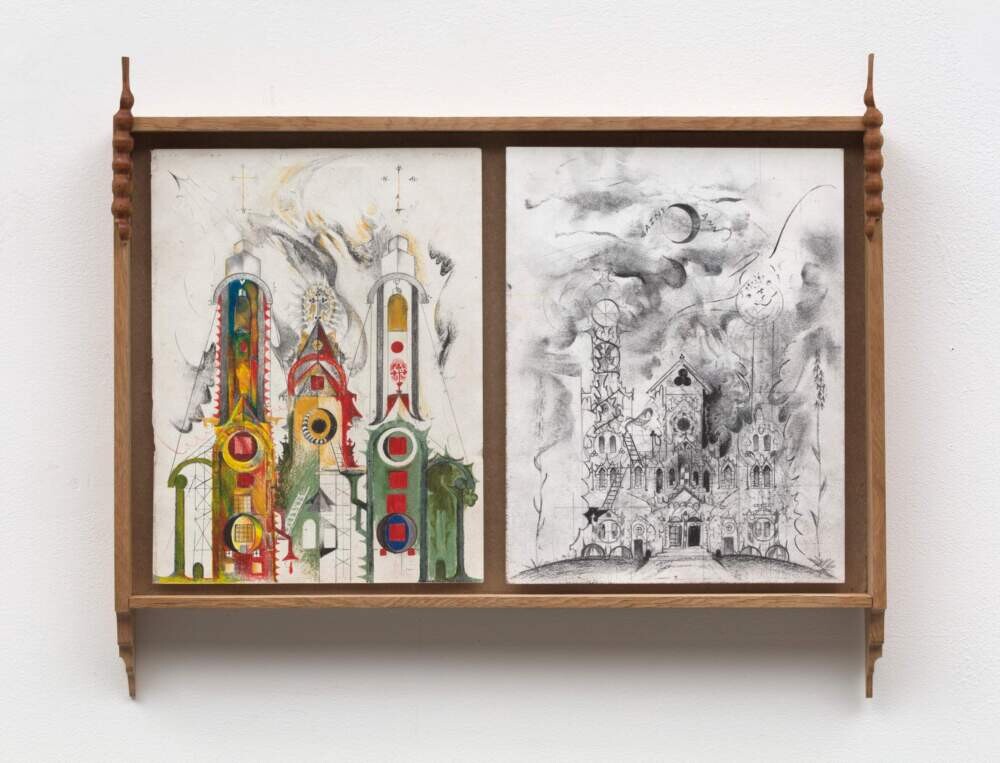
Harry Gould Harvey IV, “Presupposition of Saint Anne,” 2023. (Courtesy the artist and PPOW, New York)
‘Noé Martínez: The Body Remembers’
Rose Art Museum
March 13-June 16
It’s fairly common for artists to want to learn more about their ancestors and histories. Sometimes they’ll look to forgotten traditions from their home country or study artifacts of yesteryear. There’s nothing wrong with those practices, but Indigenous Mexican artist Noé Martínez takes a different approach in his search for understanding his family’s past. He looks at how evidence of his ancestor’s lives is still held within his own body. Martínez uses several mediums to look inward in search of answers to his questions. The exhibit includes installations of a life-sized collage of bodies, a large-scale projection of ceremonial dance and clay shaped in a traditional, Indigenous style.
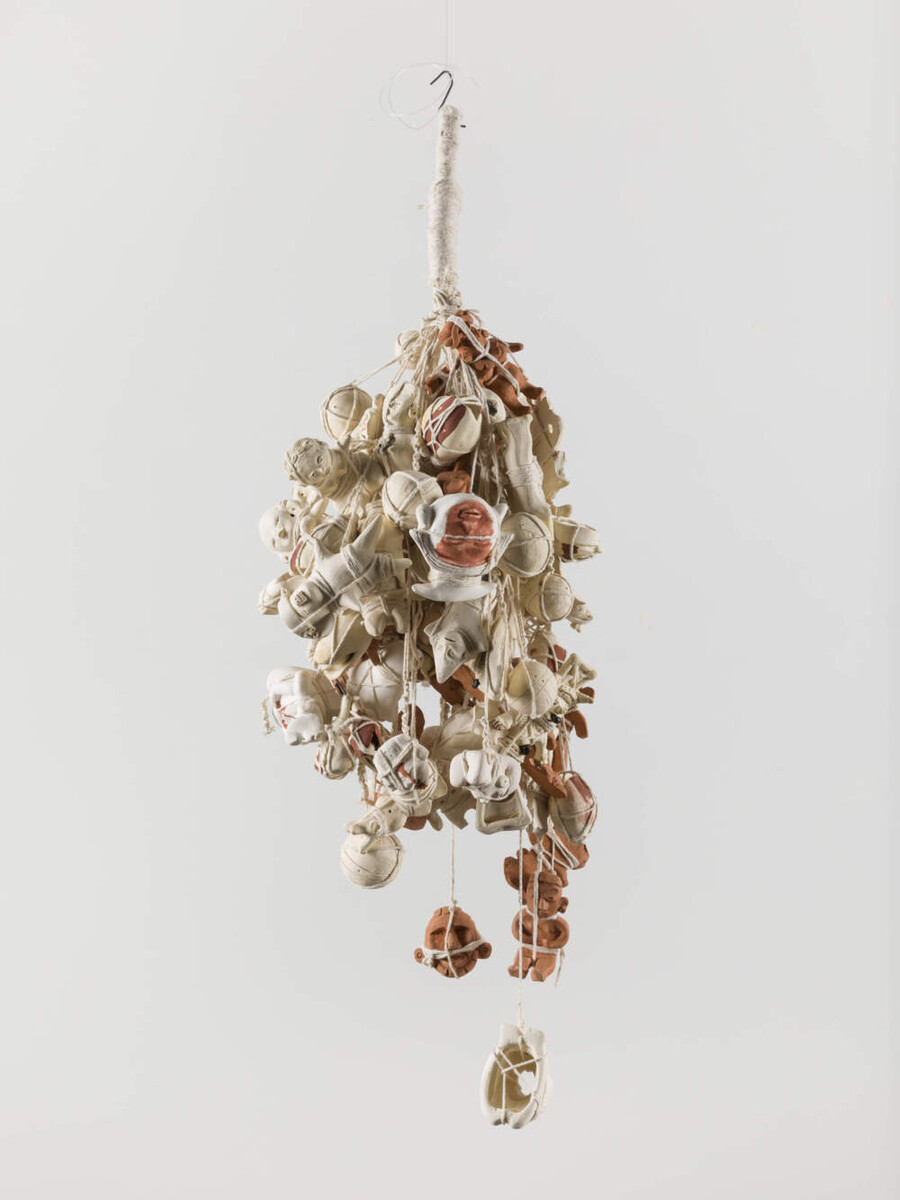
No Martinez, “Racimo 3,” 2022. (Courtesy of the artist and Patron Gallery, Chicago, IL)

